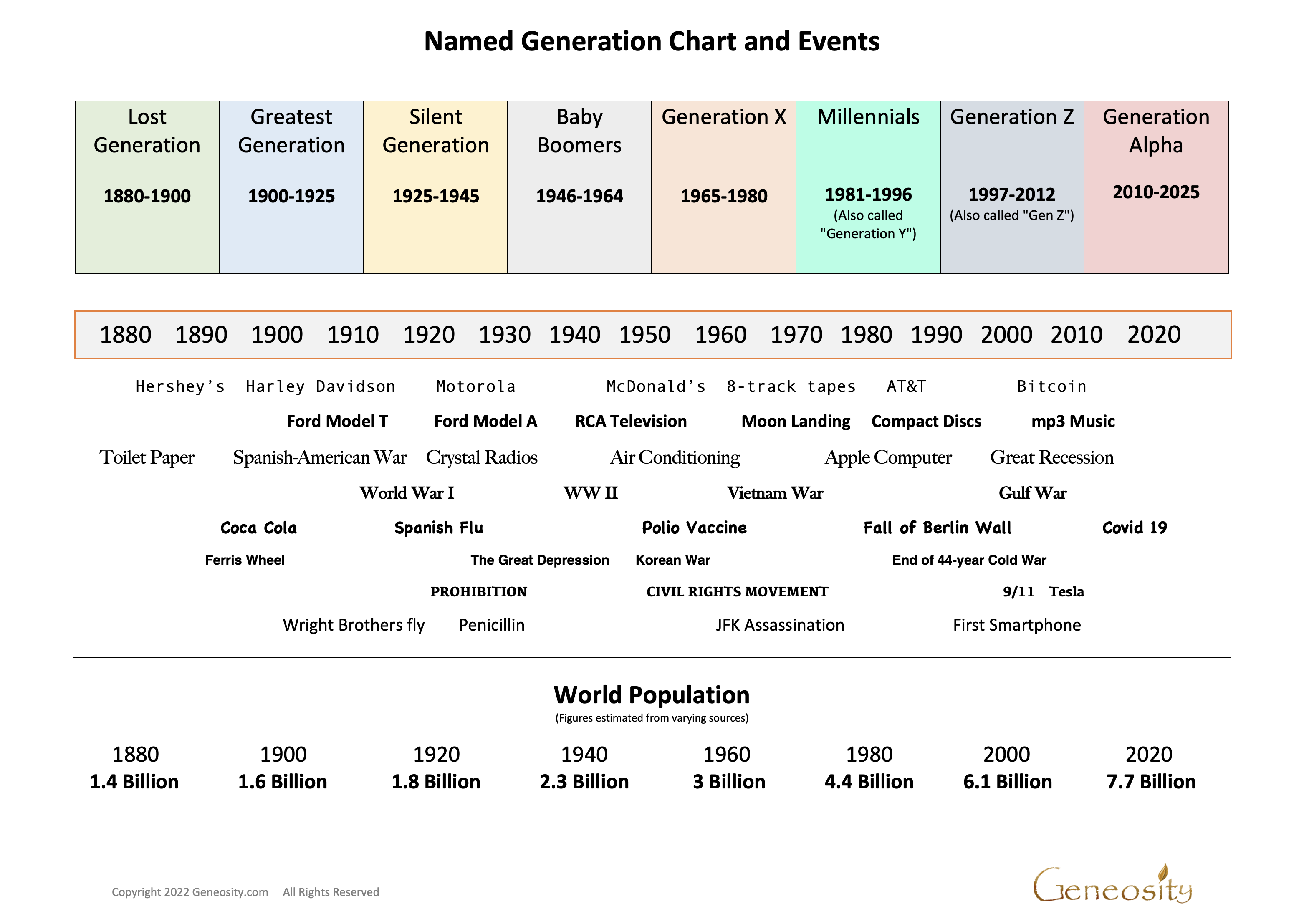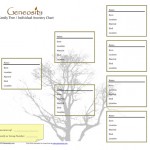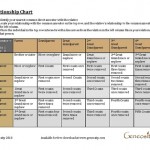The Chart of Named Generations and Years below refers to the demographic cohorts that are defined by the years of birth of individuals particularly in Western society. Use this printable chart as a reference for the seven common names of generations. You’ll see the year intervals of each birth generation along with a timeline of major events and the world population. Different cultures and societies have varying ways of defining generations, but there are several common ways of categorizing people in the United States with the names of generations:
- The Lost Generation: Born between 1880 and 1900 that were born and raised around the turn of the 20th century, witnessed the first automobiles, enjoyed Coca-Cola and read about the Wright Brothers.
- The Silent Generation: Born between 1925 and 1945, coming of age during the post-World War II era, a time of prosperity and relative peace in the Western world.
- The Baby Boomers: Born between 1946 and 1964, coming of age during the civil rights movement, the Cold War, and the rise of consumer culture.
- Generation X: Born between 1965 and 1980, coming of age during the end of the Cold War, the rise of personal computers and the internet, and the beginning of economic globalization.
- Millennials/Generation Y: Born between 1981 and 1996, coming of age during the 9/11 attacks, the Iraq War, and the Great Recession.
- Generation Z: Born between 1997 and 2012, coming of age during the rise of social media, the Arab Spring, and the ongoing COVID-19 pandemic.
- Generation Alpha: Born between 2010 and 2025.
Read more in our article explaining the Named Generations here.
Download PDF Copy of Named Generation Chart and Years
It’s important to note that these are not set in stone, and people are hard to classify exactly by birth years. The years that make up a certain generation varies, especially the beginning and ending years. In Western societies these named generations are used for cultural and demographic reference. Also, generations are defined differently in other countries or cultures.
Additionally, it’s worth noting that these are broad generalizations and not every individual in each generation will necessarily fit the characteristics and experiences associated with it. Support for and against prohibition, political views, war, abortion, and a great many issues have polarized areas of society. Therefore, an individual born in any particular generation will be shaped to a degree by events and the beliefs of their parents and peers. Groups of individuals need not share common opinions and morals but have indeed been affected in one way or another by the events of an evolving society.
Generational research is an intriguing way to learn more and understand the times in which our ancestors lived. Many of the events listed in the generation chart had an effect not only on the Western world, but made an impact on the world at large.
Names of Generations and Their Significance
The labels for generational cohorts have emerged over time and have been popularized through common usage and cultural understanding. The names of generations define groups of populations segmented by the characteristics, values, and experiences shared by people who were born during a particular period.
For example, the Baby Boomer generation refers to individuals born between the mid-1940s and mid-1960s, following the post-World War II baby boom. The term “Baby Boomer” wasn’t taken seriously as a defining factor of demographic phenomenon until a pattern of generational differences in demeanor and viewpoints began to emerge as other generations were studied in the same way.
The study of generations is nothing new. Society age groups have been a matter of study for hundreds of years and have been referred to in ways such as family era, pre-war, post-war and have been defined by changes or turnover of royal families and empires.
Never in the history of civilized society have technology, economics and industry evolved so quickly that such dramatic shifts in lifestyle and personal views can change so profoundly from one generation to the next. This is why our modern names of generations provide for the necessary distinctions of age-related populations today.
Age groups of generations however has remained rather constant and range roughly about 20 years to 30 years in term. This Wikipedia article provides a more in-depth explanation of generations.




